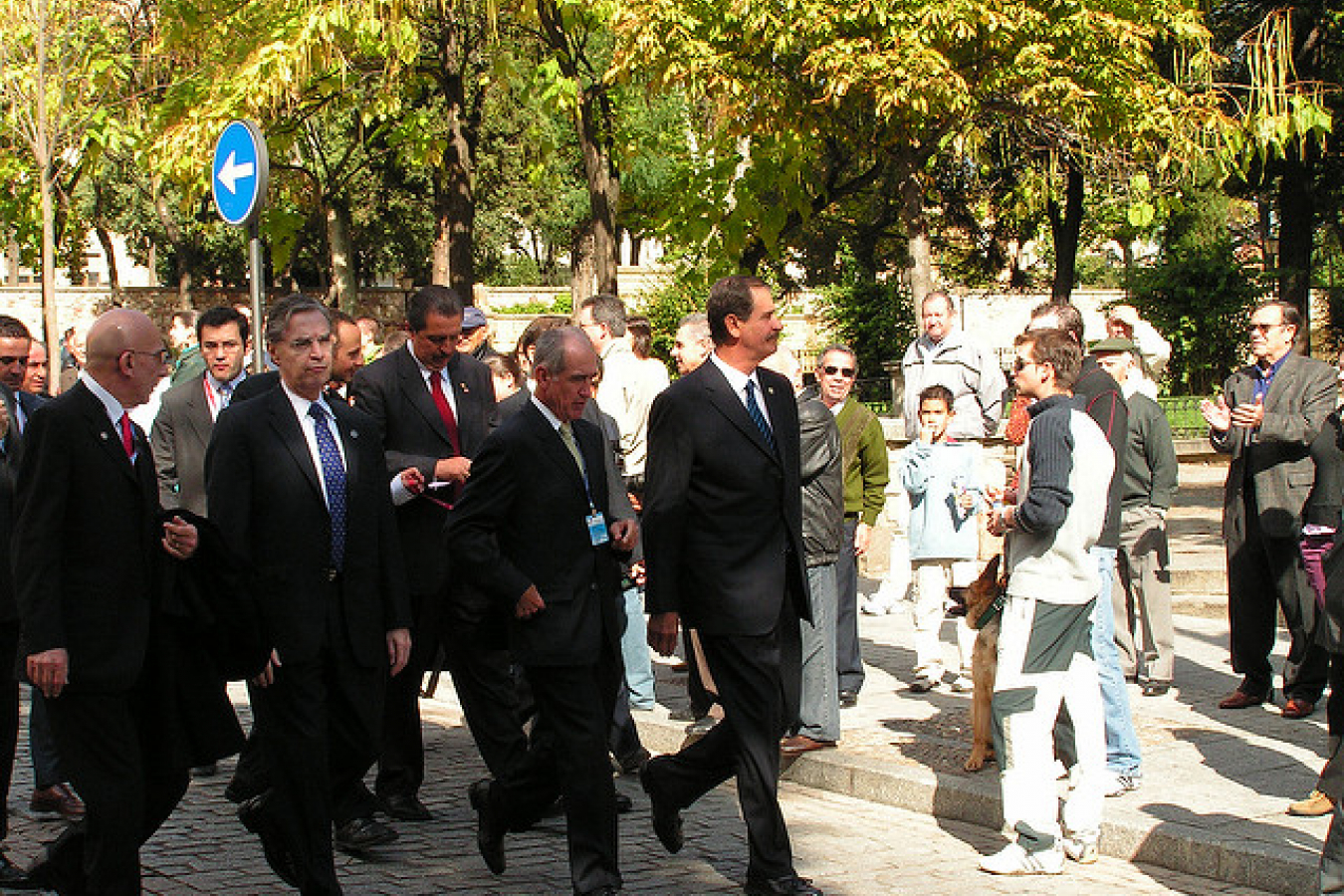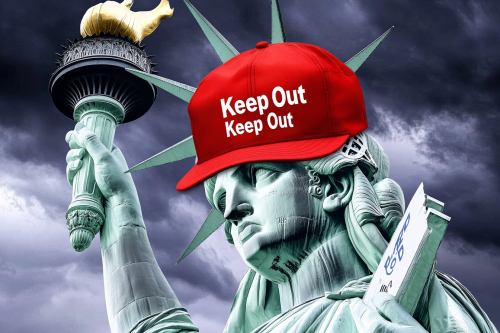 • Watch This Video
• Watch This VideoLast week, U.S. President Bush signed a $35 billion homeland security bill that includes $1.2 billion for a security wall along the U.S.-Mexico border to stem illegal immigration. Until now, Mexico has been persuing diplomatic channels to find a solution that doesn't involve turning the border into a semi-military zone, but in reaction to the spending bill signed by Bush, outgoing Mexican President Vicente Fox is using his last days in office to attempt stronger action.
On Monday, 08 October, Mexico's foreign secretary said the country may take a dispute over U.S. plans to build a fence on the Mexican border to the United Nations. Luis Ernesto Derbez told reporters in Paris, his first stop on a European tour, that a legal investigation was under way to determine whether Mexico has a case.
The Mexican government last week sent a diplomatic note to Washington criticizing the plan for 700 miles of new fencing along the border. President-elect Felipe Calderon also denounced the plan, but said it was a bilateral issue that should not be put before the international community.
$1.2 billion, however, is only a down payment and falls far short of the estimated $6 billion the fence is expected to cost. Lawmakers from both parties conceded that even at 700 miles in length, the barrier would leave nearly 1,300 miles of border uncovered.
Derbez said Monday after meeting with French Foreign Minister Philippe Douste-Blazy that it was a "shame" U.S. immigration policy had been used for what he claimed was a short-term political gain in the lead-up to midterm elections in the U.S. in November.
He said he discussed the issue with Douste-Blazy, and planned to bring it up in meetings with his Spanish and Italian counterparts during visits to Madrid and Rome. He vowed to work on the case until the "very last day" of President Vicente Fox's term, which ends 01 December.
Amid bitter partisan fighting, the Republican-controlled U.S. Senate pushed through the border fence bill last month and President Bush has said he will sign it into law, despite last-minute pleas from the Mexican government for a veto.
"What should be constructed is a bridge in relations between the two countries," Derbez said.
Rising from the Pacific surf and zig-zagging along the border for 14 miles, the Tijuana section of the border fence has done little but push illegal migrants into the Arizona desert and feed the smuggling industry since it went up in 1994.
Today, as the U.S. prepares to build a high-tech barrier with 700 miles of extra fencing, motion detectors and remote controlled devices, smugglers are already figuring out how to beat the new security.
Even before President Bush signed the $1.2 billion funding bill Wednesday to strengthen busy crossing points, border patrol figures indicated that smugglers have been hiding more migrants in vehicles, or diverting them across one of the most inhospitable sections of the border.
Some experts predict smugglers could turn to boats and tunnels, two methods popular with drug smugglers but seldom used by migrant traffickers.
No amount of border security will stop illegal immigration completely. Bush himself said that enforcement alone would not stop illegal immigration at the news conference when he signed the bill on 04 October. The reality is that roughly half the estimated 12 million undocumented foreigners in the United States entered on bona fide visas and stayed after they expired.
While the interview process for visas has become tougher, it has failed to stop these so-called "overstays" from reaching for the American dream. For those who cannot get a visa, there's a smuggling business that moves millions of people from Mexican towns to employers throughout the United States.
The increased enforcement that began with Operation Gatekeeper in 1994 — and produced the corrugated metal and chain-link fence — dramatically cut illegal border crossings in the Tijuana-San Diego area, but overall, they kept their pace. Total arrests along the nearly 2,000-mile border with Mexico has ebbed and flowed since then but changed little: 1.3 million in 1995, compared with 1.2 million in 2005.
From Oct. 1, 2005, to Sept. 15 of this year, 426 people died while illegally crossing the border, and the Colegio de la Frontera Norte says the death toll since 1994 is about 3,700. "More walls will make it more difficult for migrants to cross, but they will keep trying, even if they risk dying," said Luis Kendzierski, a priest who directs a Tijuana migrant shelter.
Often, migrants too tired or poor to attempt another crossing end up staying just south of the border. Ramos said Tijuana's population has more than doubled to about 1.3 million since the U.S. crackdown began.
"This has created all sorts of problems for Tijuana, and many other border cities where this happens, because they lack the necessary public services," he said.
Jesus Villalobos, 31, deported from Los Angeles a week ago, plans to hire a smuggler before crossing again — as soon as possible, to beat the new security measures.
"I need to get back because my daughter is there, my life is there," Villalobos said while resting at a migrant shelter in Tijuana.
"It's what the people in this country want," Bush said. "They want to know that we are modernizing the border so we can better secure the border."
Mexican President Fox, who has spent his six-year term lobbying for a new guest worker program and an amnesty for the millions of Mexicans working illegally in the United States, has called the barrier "shameful." He compares it to the Berlin Wall.
U.S. Representative Ed Markey, a senior member of the House Homeland Security Committee, said the homeland security spending bill does not improve screening of cargo carried on passenger planes into the United States, does not provide money to buy and install advanced explosive-detection equipment and does not include strong enough security requirements to protect against a terrorist attack on chemical plants.
"There are nightclubs in New York City that are harder to get into than some of our chemical plants," Markey said.
The European Union is struggling with its own illegal immigration problems, especially people from Africa attempting to enter through southern countries such as Spain, Portugal, Italy and France. Diplomatic support and a sympathetic ear for Mexico are likely to be strong. Mexico has been making strong efforts to cooperate with the United States, the sort of cooperation the EU has been having serious problems receiving from African nations.
Related:• Another US town to make it illegal to hire illegals
• US passport rules for 2007 delayed by one week
• US visa waiver program for 27 countries flawed, under review
• US study - Immigrants probably don't take jobs from Americans
• French proposal on immigration divides EU
• African migrants attempt entry into the EU via Mediterranean
• European Commission plans spyplanes to patrol EU borders




